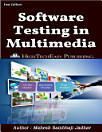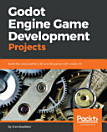Deep Learning for Video Understanding
About this ebook
About the author
Zuxuan Wu received the Ph.D. in Computer Science from the University of Maryland in 2020. He is currently an Associate Professor in the School of Computer Science at Fudan University and worked as a Research Scientist at Facebook AI. His research interests are in deep learning and large-scale video understanding. His work has been recognized by an AI 2000 Most Influential Scholars Award in 2022, a Microsoft Research PhD Fellowship (10 people Worldwide) in 2019 and a Snap PhD Fellowship (10 people Worldwide) in 2017.
Yu-Gang Jiang is a Chang Jiang Scholar Distinguished Professor at School of Computer Science, Fudan University. His research is focused on multimedia, computer vision, and robust & trustworthy AI. As the director of Shanghai Collaborative Innovation Center of Intelligent Visual Computing and Fudan Vision and Learning (FVL) Laboratory, he leads a group of researchers working on all aspects of robust & trustworthy visual analytics. He publishes extensively in top journals and conferences with over 25000 citations and an H-index of 79. His research outcomes have had major impacts on applications like mobile visual search/recognition and defect detection for high-speed railway infrastructures. His work has led to many awards, including the inaugural 2014 ACM China Rising Star Award, the 2015 ACM SIGMM Rising Star Award, several best paper awards, and various recognitions from NSF China, MOE China, and Shanghai Government. He holds a PhD in Computer Science from City University of Hong Kong and spent three years working at Columbia University before joining Fudan in 2011. He is an elected Fellow of IAPR and IEEE.




